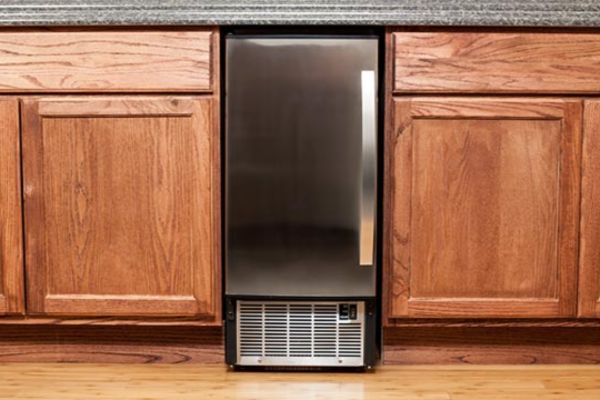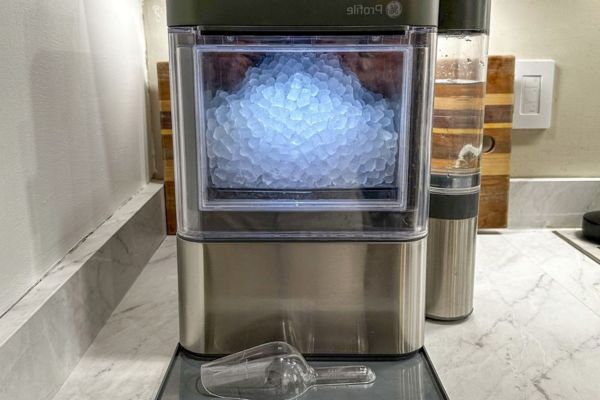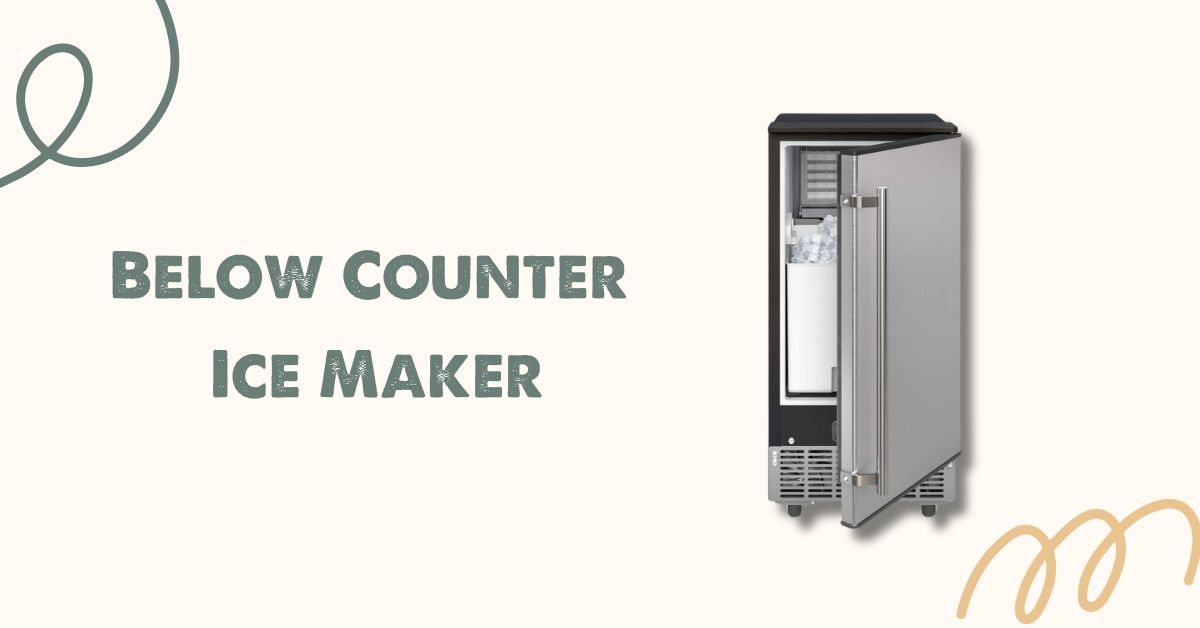Below counter ice makers are essential in many homes and businesses, delivering a consistent supply of ice without occupying much space. Regular cleaning is crucial to keep these machines running efficiently and to preserve the quality of ice. In this guide, I’ll show you the key steps to maintain your below counter ice maker in top condition.
Why Cleaning Below Counter Ice Makers is Important
A dirty ice maker can significantly impact the quality of ice produced, leading to poor taste and potential health hazards due to the buildup of bacteria and mold. Regular cleaning not only enhances the performance of your ice maker but also extends its lifespan and prevents issues that could necessitate costly repairs.
Steps to Clean Below Counter Ice Makers
- Unplug the Ice Maker and Remove Any Remaining Ice Start by ensuring safety; unplug the machine and remove any ice and water currently in the bin.
- Prepare a Cleaning Solution Use warm water mixed with a mild detergent to create a gentle cleaning solution that won’t damage the internal components of the ice maker.
- Wipe Down the Interior and Exterior Surfaces Thoroughly clean both the interior surfaces and the exterior of the ice maker to remove any dirt or residue. Pay special attention to areas that are hard to reach but can harbor mold and bacteria.
- Clean the Ice Bin and Ice Scoop Thoroughly These components are in direct contact with the ice, making their cleanliness crucial. Wash them with the same detergent solution used for the ice maker.
- Sanitize the Machine Mix a solution of water and vinegar to sanitize the machine. This natural solution effectively kills bacteria without leaving harmful residues.
- Rinse and Dry After cleaning and sanitizing, rinse all parts with clean water to remove any cleaning solution residue. Dry all components thoroughly before reassembling the machine to prevent ice clumping.

Maintenance Tips for Below Counter Ice Makers
Regularly Check and Replace Water Filters To ensure the quality of your ice, regularly replace the water filters according to the manufacturer’s recommendations.
Keep the Area Around the Ice Maker Clean Regularly cleaning the area around your ice maker prevents dust and debris from getting inside the machine.
Schedule Deep Cleaning Sessions While routine cleaning is crucial, deep cleaning sessions at least once a month can help maintain optimal performance and longevity.
Monitor Ice Production and Quality Keep an eye on the ice produced. Early detection of changes in ice quality can help you address issues before they require extensive repairs.
Troubleshooting Common Problems with Below Counter Ice Makers
Insufficient Ice Production This could indicate a need for cleaning or that there are issues with the water supply line.
Irregular Ice Cube Sizes Small or malformed cubes often suggest a clogged filter or an issue with the freezer settings.
Noisy Operation Loud noises may result from built-up ice or mechanical failures. Regular maintenance can help mitigate this issue.
Off-tasting Ice This usually points to a dirty ice bin or old filters that need replacing to ensure clean, fresh-tasting ice.

Additional Tips for Optimal Ice Maker Performance
Use Potable Water Always use clean, potable water to avoid contaminants affecting ice quality.
Avoid Overfilling Keep the ice bin from being overfilled to ensure your ice maker operates efficiently.
Invest in a Water Softener If you have hard water, a water softener can prevent scale buildup inside your machine, enhancing its performance and lifespan.
Follow Manufacturer’s Instructions Always adhere to the cleaning and maintenance guidelines provided by the manufacturer to avoid inadvertently damaging your best undercounter ice maker.

Mistakes to Avoid
Using Harsh Chemicals Avoid harsh chemicals that can damage the internal parts of your ice maker and potentially contaminate your ice.
Skipping Regular Maintenance Regular cleaning is crucial; neglect can lead to performance issues and health risks.
Allowing Ice Build-up Prevent excessive ice buildup as it can lead to efficiency problems and strain the machine.
Neglecting to Sanitize Sanitizing is essential to prevent bacterial and mold growth that can contaminate the ice and pose health risks.

Frequently Asked Questions
How often should I clean my below counter ice maker? Clean your ice maker every six months, or more frequently depending on usage and water quality.
Can I use bleach to clean my ice maker? It’s best to avoid bleach as it can be too harsh and leave a residue. Opt for milder cleaners like vinegar and water.
Why is it important to sanitize the ice maker? Sanitizing removes harmful bacteria and mold, ensuring the ice is safe to consume.
What should I do if my ice maker is not working properly? After basic troubleshooting, if issues persist, consult a professional technician or refer to the manufacturer’s warranty.
Maintaining your below counter ice maker isn’t just about extending its life; it’s about ensuring the safety and enjoyment of every cold drink you serve. Regular cleaning and maintenance are key to achieving this goal.


I just cleaned my under counter ice maker using this guide and it works so much better! The ice is clearer too. Highly recommend!
I never thought to clean my under counter ice maker before, but I’m so glad I did. It was so dirty and now it looks brand new. Thanks for sharing this tip!
This is the easiest to follow guide I’ve ever found for cleaning an under counter ice maker. My ice maker is now sparkling clean and free of ice buildup.
How often should I clean my under counter ice maker?
What type of cleaning product is best to use for under counter ice makers?
Is there a way to clean my under counter ice maker without using chemicals?
What are the signs that my under counter ice maker needs to be cleaned?
Always unplug your under counter ice maker before cleaning it.
Read the owner’s manual for your under counter ice maker carefully before using any cleaning products.
Wear gloves and safety glasses when using chemicals.